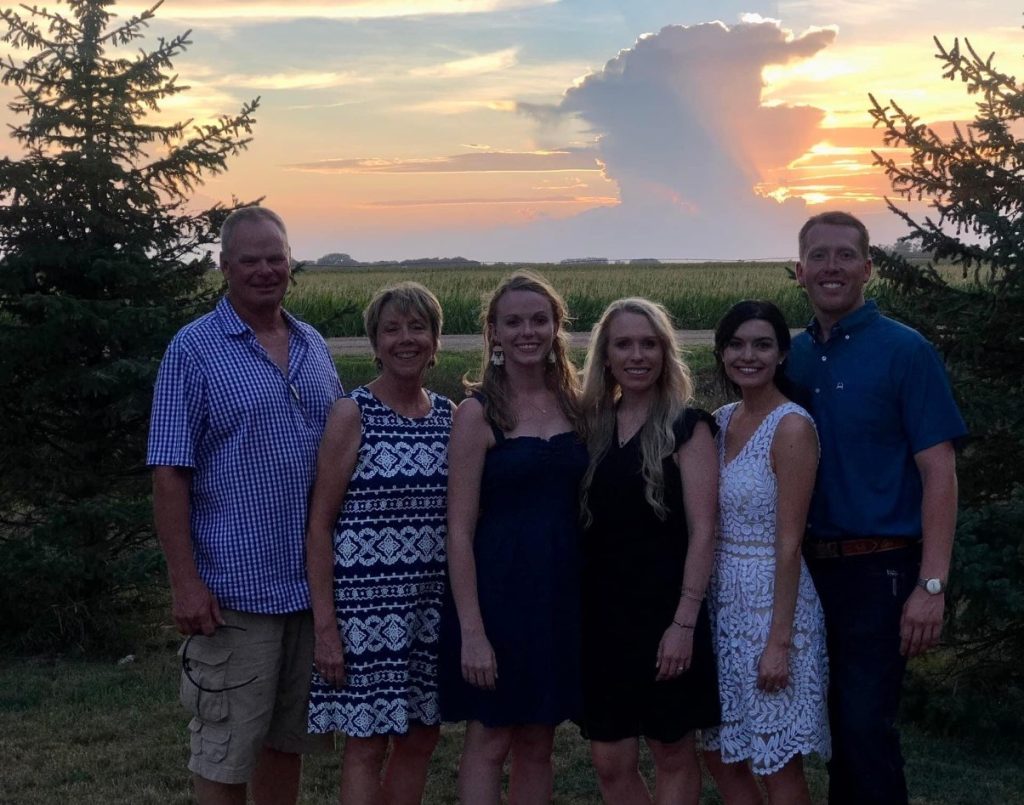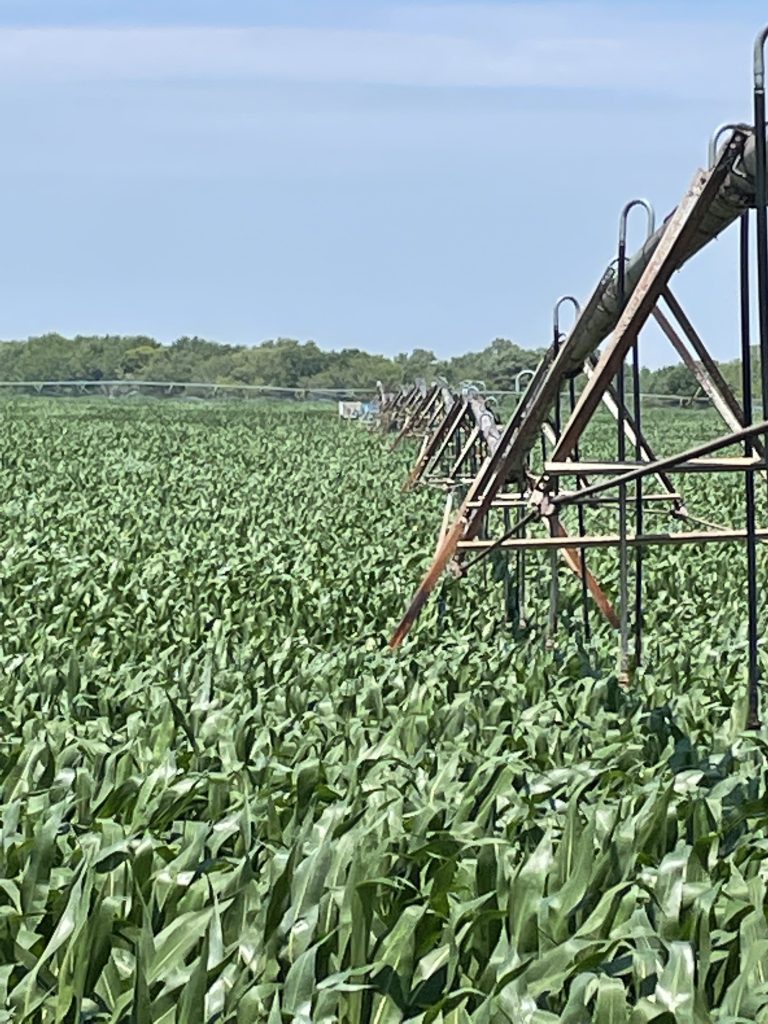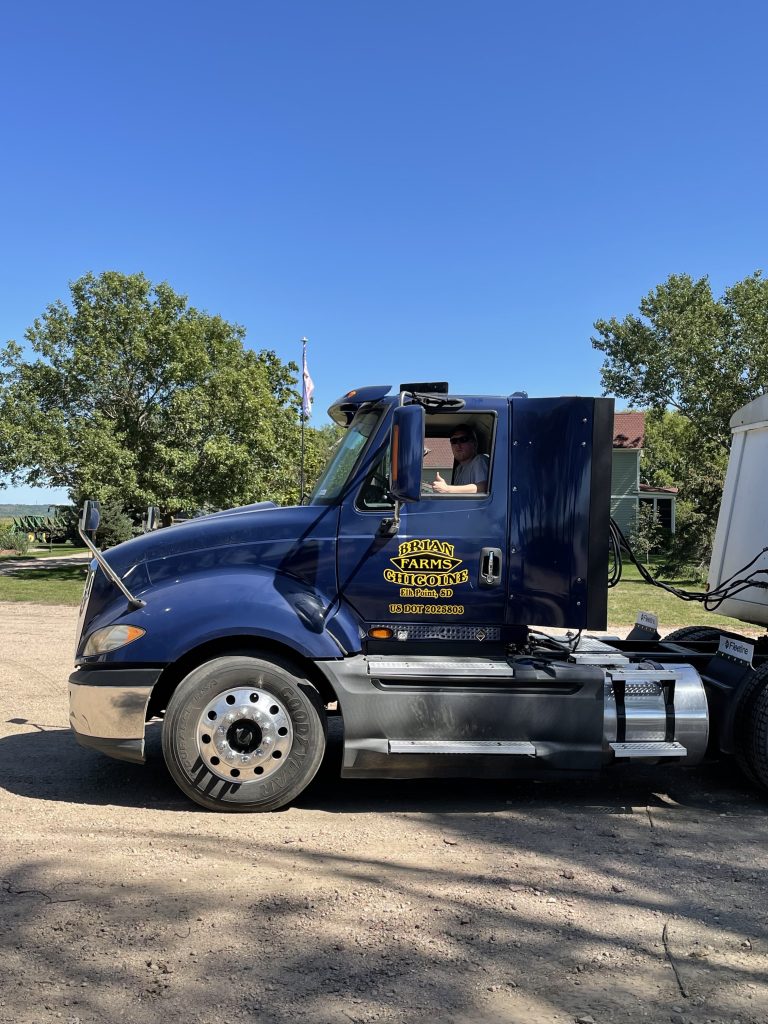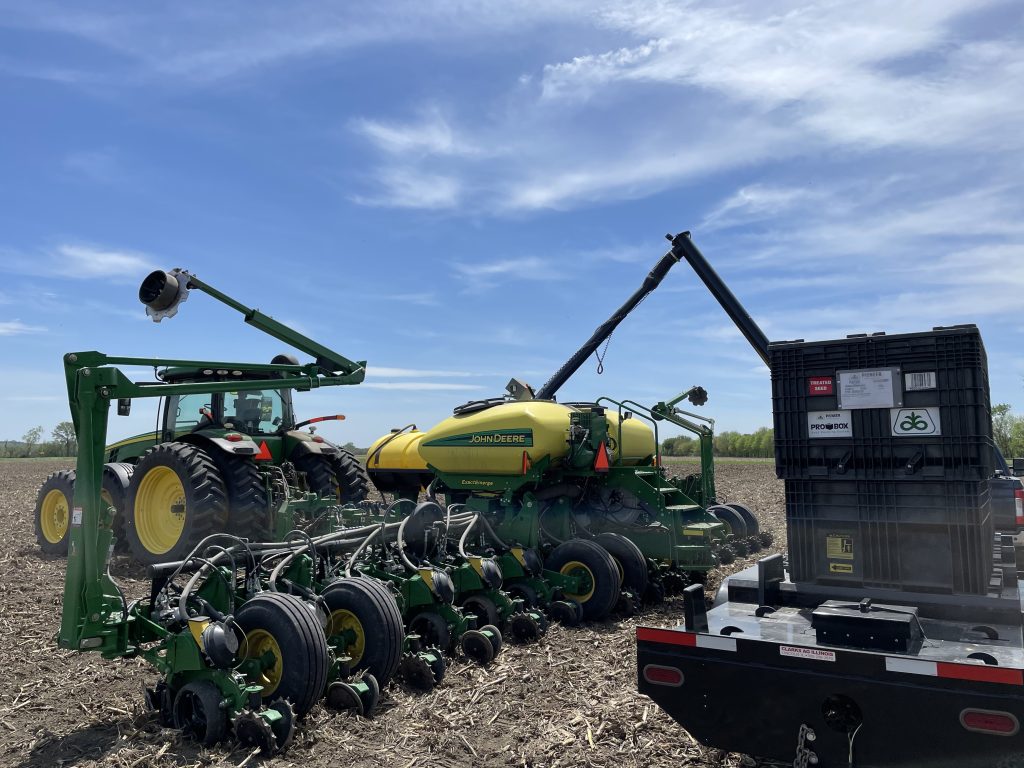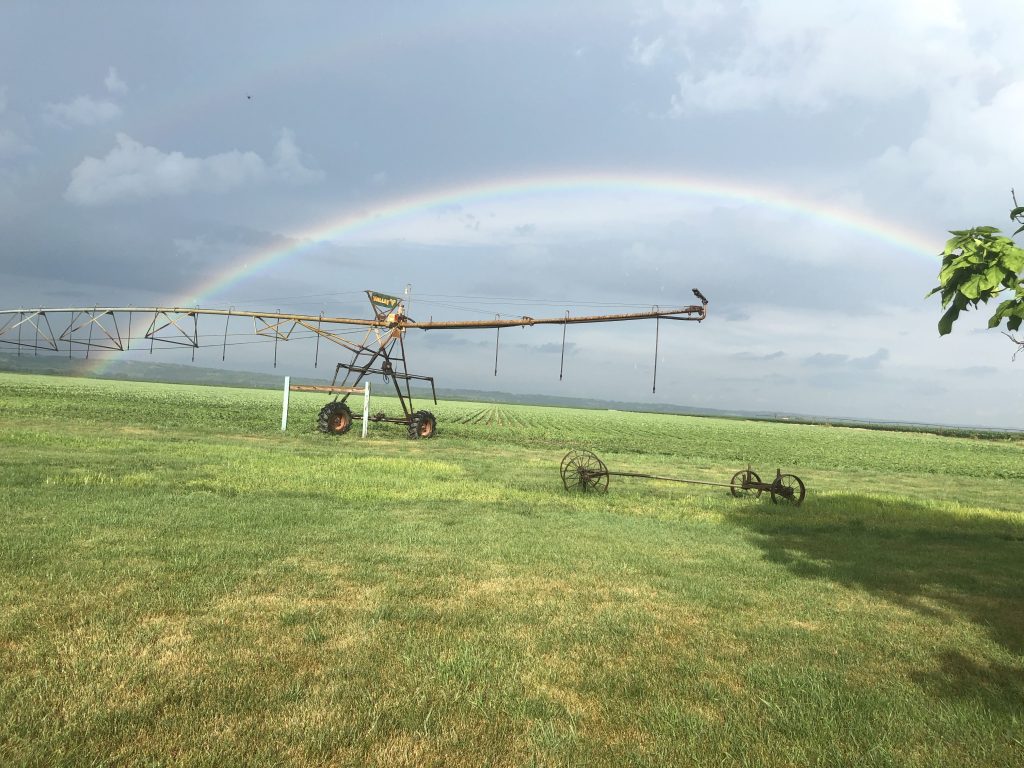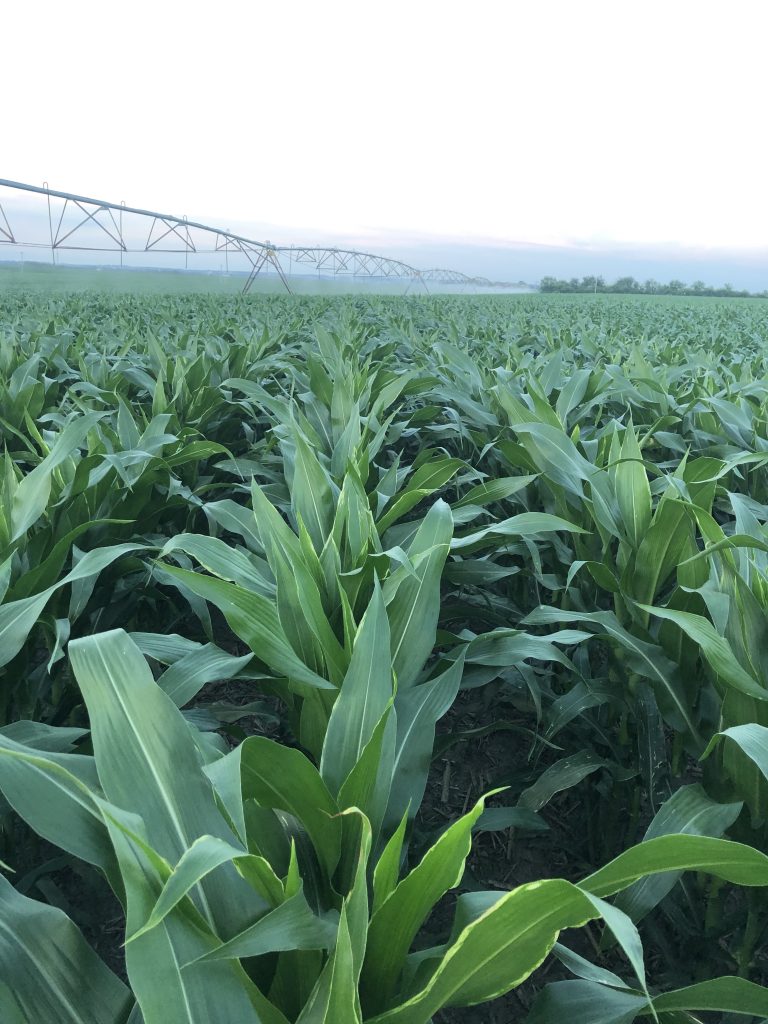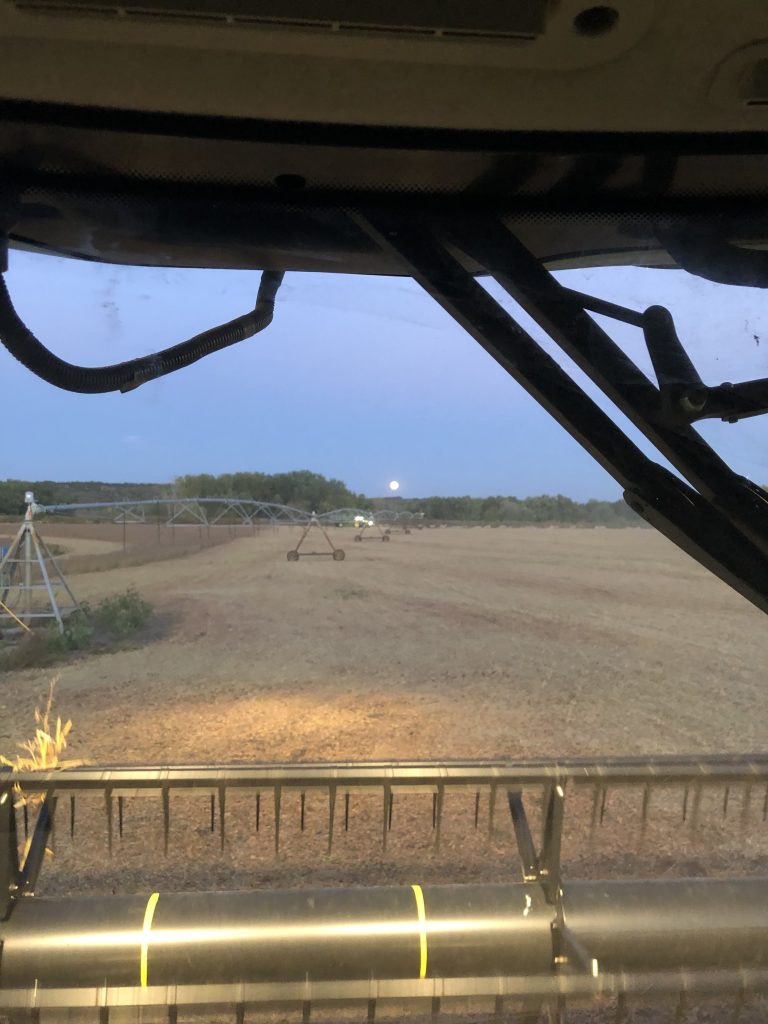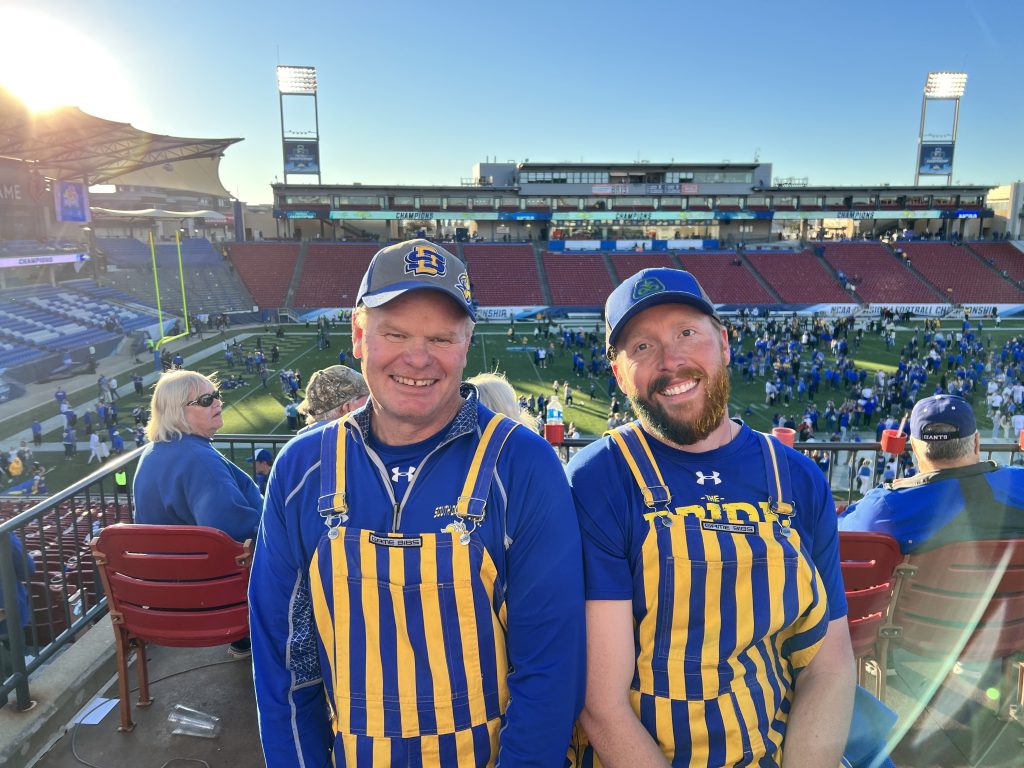Chicoine Family
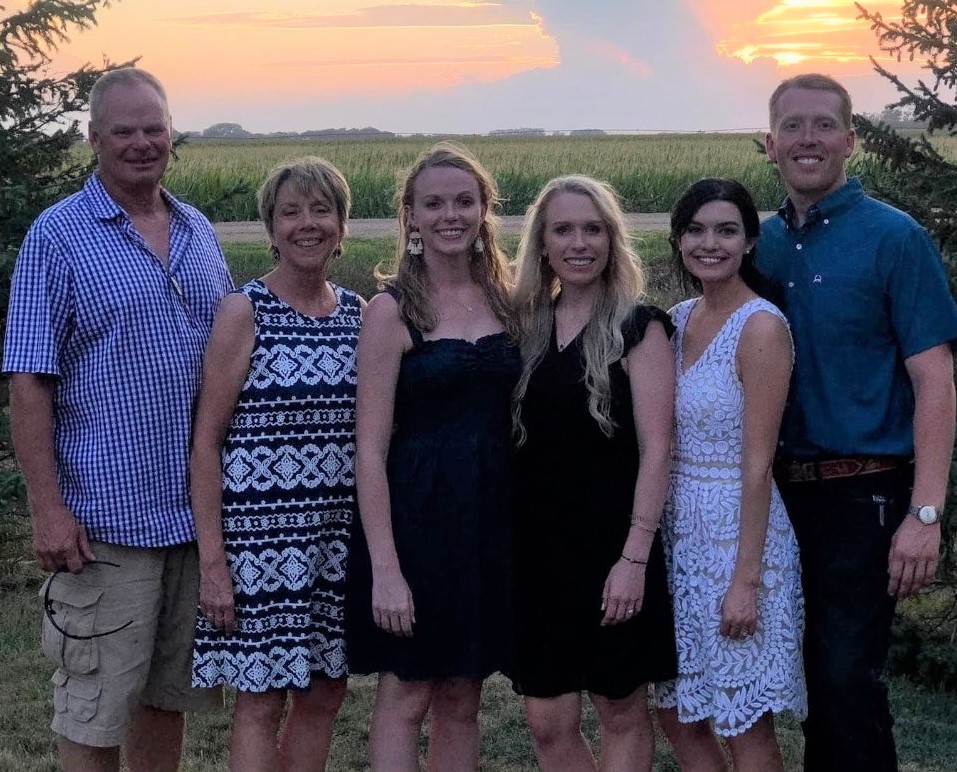
By Lura Roti
Brian Chicoine’s dad, Roland, encouraged his eight children to leave the family’s Elk Point farm and see the world.
“Then, if you decide you want to come back to the farm, it is your choice – it is not a directive,” Brian explained.
The sixth of eight children, like his older siblings, Brian followed his dad’s suggestion. After graduating from South Dakota State University in 1983 (his parents also encouraged all their children to pursue a college education), he began his career working for an agronomy company in Denver, Colorado.
While in Colorado, Brian married Terri, a CPA. A few years later, in 1988 when Roland was ready to retire, the couple decided to return to the family farm.
“My older siblings were already well established in their chosen careers, so we had the opportunity to move back home,” Brian said.
Thankfully, Terri was not opposed to settling in Brian’s home state of South Dakota. Together the couple raised three children on their farm: Amanda, Corey and Anna.
“When we first moved from Colorado to Elk Point, we lived in town, but I knew that I wanted our family to live on the farm because farming is not an 8-to-5 job, so I wanted the kids to have more time with Brian,” Terri said. “It turned out to be a wonderful place to raise them, and it created a close sibling bond because if they wanted to play, they played with each other.”
Made it through the ’80s but barely
Brian is the fifth generation of Chicoines to farm in South Dakota. “They came from Canada and settled in this area in the 1880s. They said Canada was getting too crowded, and they had heard about the expanse of the Dakotas,” Brian said.
Brian still farms the land that was the family’s original homestead.
When he began taking over farm ownership in 1988, the operation was not thriving. “It was small. Like a lot of farmers my dad’s age, they made it through the ’80s, but barely,” Brian explained. “Interest rates and high land prices really took their toll.”
And then there were the ’83 and ’84 floods.
“Where our farm is situated, we are at the mercy of the Big Sioux River,” Brian said.
The early years were a struggle, but over time, Brian was able to expand his farm acres.
When land prices shot up in recent decades, Brian said his focus changed.
“I decided I would invest in the ground we own and rent and do what it takes to make it better and more productive.”
Improving drainage and implementing irrigation have been key to improving land productivity. Brian knew the value of irrigation because his dad began implementing open ditch flood irrigation in the late 1950s.
“This land is flat. We have some ground where there is only 6 inches of fall per mile – flat as a tabletop, so it is easy to do flood irrigation,” Brian explained.
And water is accessible. Their water comes from the Missouri/Big Sioux rechargeable aquifer “Most of our wells are 80 to 120-feet deep. There is an abundance of water. We are blessed in that way down in this area,” he said.
Brian has since converted most flood irrigation to center pivot. “Obviously there is quite a bit initial cost, but irrigation pays big dividends.”
In typical moisture years, they may put on 3 to 4 inches of water during crucial times, like pollination, and irrigated fields of corn and soybeans respond with about a 60 bushel an acre advantage.
The yield advantage increases dramatically in dry years, like 2022. Brian applied between 11 and 13 inches of water throughout the dry growing season. The crops responded with yield advantages of as much as 100 bushels per acre.
Because of the farm’s proximity to the Big Sioux River, Brian also focuses on helping reduce erosion and runoff by implementing buffer strips.
Proximity to the Big Sioux River also means Brian is responsible for the dikes on his land. “Since 1993, maintenance of the dike system falls on the landowners. You hope if you do a good job, then your neighbors will do a good job.”
Being a good neighbor is another focus of the Chicoine family.
“Giving back is in our blood,” explained Terri and Brian’s son, Corey.
Corey’s Grandpa Roland was a founding member of the South Dakota Irrigation Association. He also helped start the Big Sioux Watershed Conservation District and served as a South Dakota State legislator.
Brian has served on the local Union County Extension 4-H board. He currently serves on the Elk Point Township Board and serves on the board of Southeast Farmers Co-op.
Today, Corey serves on the Elk Point Economic Development committee and is a member of the current class of South Dakota Ag & Rural Leadership (SDARL).
The sixth generation comes home
Harvest 2022 saw Corey return to the farm with his wife, Kathleen.
“It’s funny, as Dad was talking about how Grandpa encouraged him to get an education and go out and see the world, I realized he and Mom did the same for me and my two sisters,” explained Corey, who like Brian, is a graduate of SDSU.
After graduating in 2017 with a degree in agronomy, Corey moved to Sioux Falls and built his career in the seed industry, working with farmers across the eastern half of South Dakota.
Because Brian is not ready to retire, Corey’s opportunity to return to the family farm came when a neighbor asked him to work for their seed business: Southern Plains Seeds.
“At SDSU they always told us, ‘if you are going to go back home to the farm or ranch, you have to bring something with you – skills or a business,’” Corey explained.
When it comes to transitioning the farm to the sixth generation, Brian and Corey are taking it slow – putting a small number of farm acres in Corey’s name.
“I have a sticky note in my office that says, ‘Be very clear about where you are going, but very flexible about how you get there,’” Brian said.
Reflecting on how things are going so far, Corey said, “Transition is not a one-year process. It is a several-year and slow process.”
He adds that he is happy he is going through this process with Brian. “We are very close and our communication with each other is open and honest. We talk most days – this is how we were, even before I moved home.”


